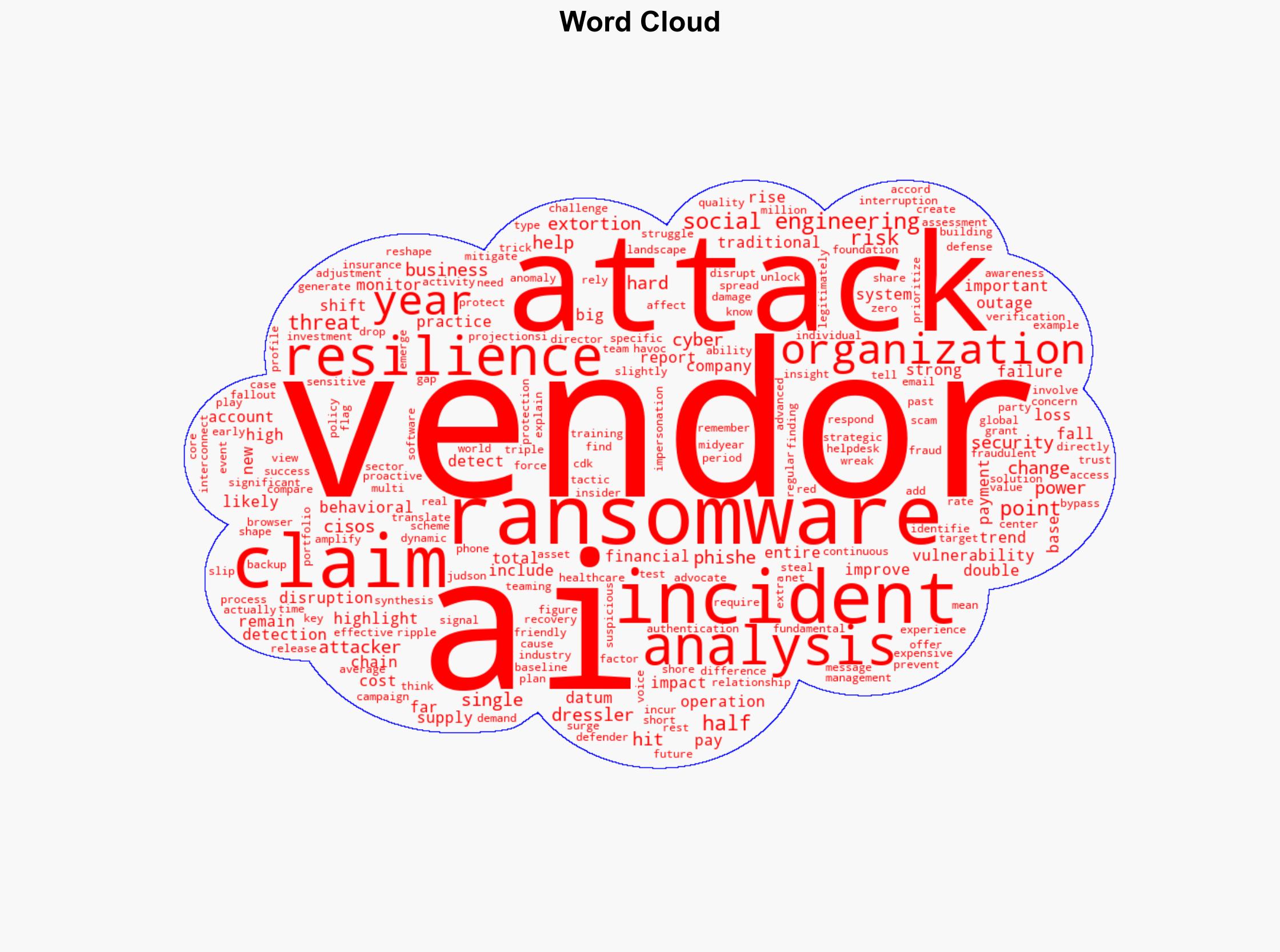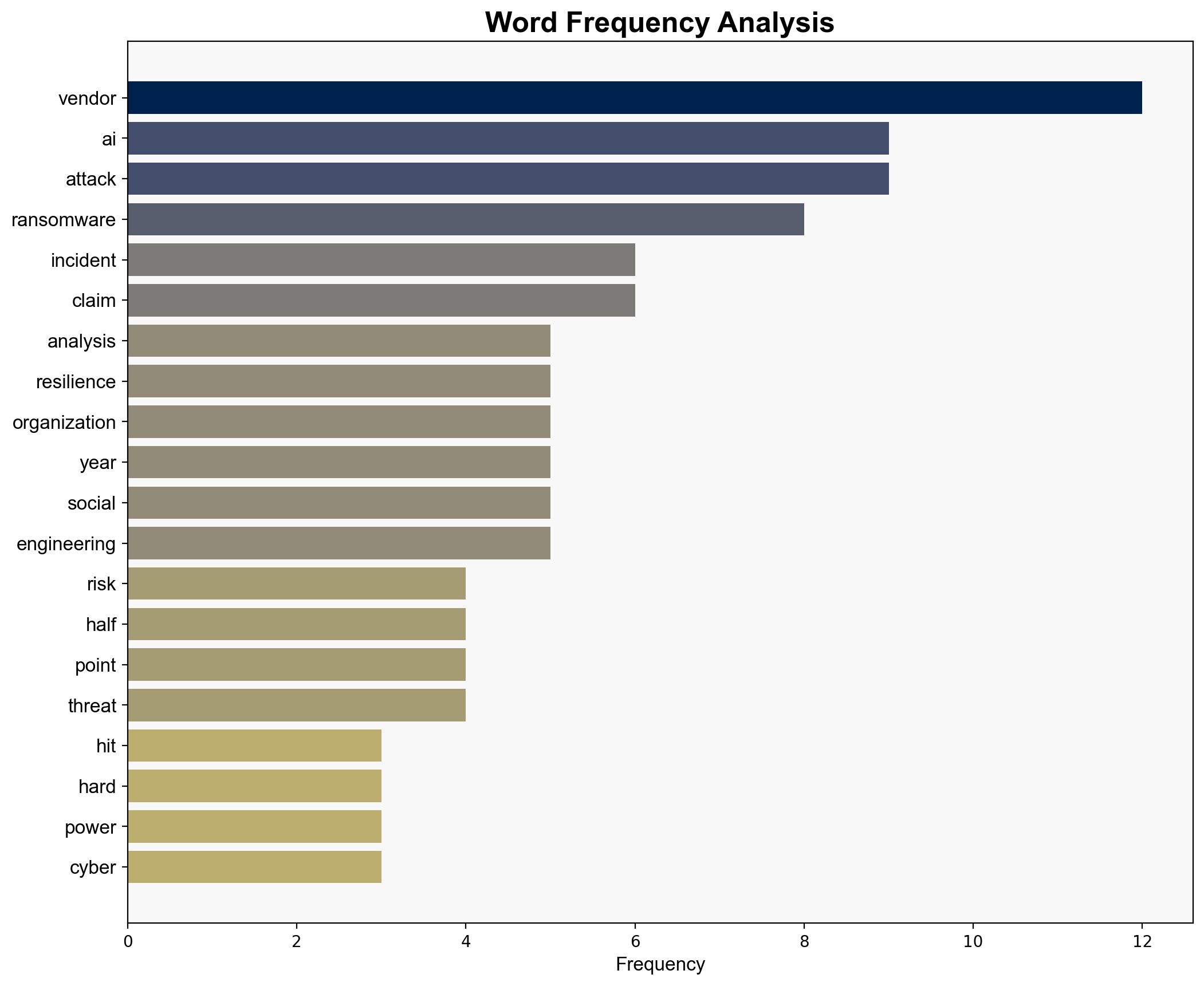Ransomware vendor outages and AI attacks are hitting harder in 2025 – Help Net Security
Published on: 2025-09-12
Intelligence Report: Ransomware Vendor Outages and AI Attacks Are Hitting Harder in 2025 – Help Net Security
1. BLUF (Bottom Line Up Front)
The strategic judgment is that the increased sophistication of AI-driven attacks and the rising frequency of vendor outages are reshaping the cybersecurity landscape, with significant implications for organizational resilience. The hypothesis that AI is amplifying the effectiveness of cyberattacks is better supported. Confidence Level: Moderate. Recommended action includes enhancing vendor risk management and investing in advanced AI-driven threat detection systems.
2. Competing Hypotheses
Hypothesis 1: The surge in ransomware vendor outages and AI-driven attacks is primarily due to the increased sophistication and accessibility of AI tools, which enhance the effectiveness of social engineering and phishing attacks.
Hypothesis 2: The rise in cyber incidents is largely due to inadequate vendor risk management practices and a lack of continuous monitoring, rather than the inherent capabilities of AI.
Using the Analysis of Competing Hypotheses (ACH) 2.0, Hypothesis 1 is better supported by the evidence, particularly the noted increase in AI-generated phishing campaigns and the challenges in detecting these attacks with traditional methods.
3. Key Assumptions and Red Flags
Assumptions:
– AI tools are widely accessible and are being used effectively by attackers.
– Organizations have not sufficiently adapted their defenses to counter AI-enhanced threats.
Red Flags:
– Potential overestimation of AI’s role without considering other factors like human error or policy failures.
– Lack of specific data on the proportion of incidents directly attributable to AI enhancements.
4. Implications and Strategic Risks
The increased effectiveness of AI-driven attacks poses significant risks to economic stability and organizational integrity. The potential for cascading failures across interconnected supply chains could lead to widespread disruptions. Geopolitically, this may increase tensions as nations seek to protect critical infrastructure. Psychologically, the persistent threat of sophisticated cyberattacks could erode public trust in digital systems.
5. Recommendations and Outlook
- Enhance vendor risk management practices by implementing continuous monitoring and dynamic assessment processes.
- Invest in AI-driven threat detection and behavioral analysis tools to better identify and mitigate sophisticated attacks.
- Scenario-based Projections:
- Best Case: Organizations successfully adapt to AI threats, reducing incident frequency and impact.
- Worst Case: Failure to adapt leads to widespread disruptions and significant financial losses.
- Most Likely: Incremental improvements in defenses, with ongoing challenges in keeping pace with AI-driven threats.
6. Key Individuals and Entities
– Judson Dressler: Director of Risk Operation Center at Resilience
– CDK Global and Change Healthcare: High-profile examples of organizations affected by vendor outages.
7. Thematic Tags
national security threats, cybersecurity, counter-terrorism, regional focus





